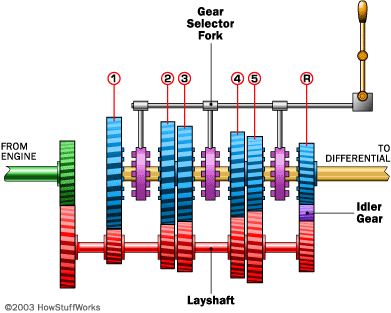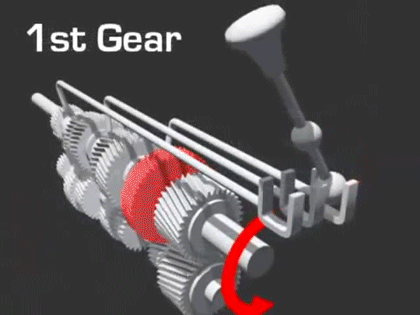Tech: Hands OFF!

While keeping your hand on the shifter might just make you look a bit like Dom Toretto, it may be having some detrimental effects on your manual transmission. Check out this article to learn more!
HOW DOES A MANUAL TRANSMISSION WORK?
Without getting into to much detail for this article, a manual transmission is simply a gear box that is used to transfer the engines power to the ground. Transmissions use a series of the different gear ratios to modulate the engines torque output for different driving conditions. Each gear in your transmission has a different gear ratio from the last. Your first gear has a gear ratio that is high in torque, but low in speed to provide quick acceleration from a stop, and your top gear will have a gear ratio that is relatively low in torque, but has a higher top speed. To change from one gear to another, linkage from your shifter inside the car runs to a gear selector on the transmission(FIG.2). Internally this linkage moves gear selector rings (FIG.1 - colored in purple) to couple and decouple gears from a driven shaft. Now that's the quick version of what a manual transmission is and how it works.
FIG. 1 FIG. 2
SO WHAT HAPPENS WHEN I REST MY HAND ON THE SHIFTER?
When you rest your hand on the shifter while in gear, you are applying a force (even if it's a small force) on the linkage. This then transfers this force to the shift forks, gear selector rings, and syncros in your transmission. When the vehicle is in motion, the gears, syncros, and selector rings are in motion as well. When you apply force to these items while in motion you are essentially grinding them down. Since the force of your hand resting on the shifter is so small, its not something you'll notice right away as it won't make any noise, nor have a immediate effects. Over time though, this will have detrimental effects that will only get worse if not taken care of.
THE SYMPTOMS
You'll normally start to notice a "notchy" feel going into the damaged gear. This rough feel will then progress into an audible grind that will soon be followed by hard engagement. Now, if caught soon enough, a fluid change with an additive can prevent further damage and remedy the issue. If not, and the issue progresses it can yield some costly repairs.
THE FIX
The correct fix will vary from transmission to transmission and will also depend on the extent of the damage. More often then not, the gear in questions will require a replacement syncro, selector ring, and sometimes the shift fork will be heavily worn and damaged as well.


Pictured above are two shift forks. The one to the left is a new fork, and the one to the right is a damaged fork. On the zoomed image we can see how the fork on the right is ground down from being pushed in the shift selector for an extended amount of time.

Pictured above we can see the syncro (left, gold in color), the selector ring (left, silver in color), we well as the hub assembly (right, silver in color). The syncro showed heavy signs of wear and would no longer allow for a smooth engagement into the next gear.
THE VERDICT
While you may look awesome posted up with your hand on the shifter, it's something that will only lead to damage and costly repairs. With typical repair costs around $1500-$2000, it's probably best to hold on to something else in the car. ;)
-LL






















